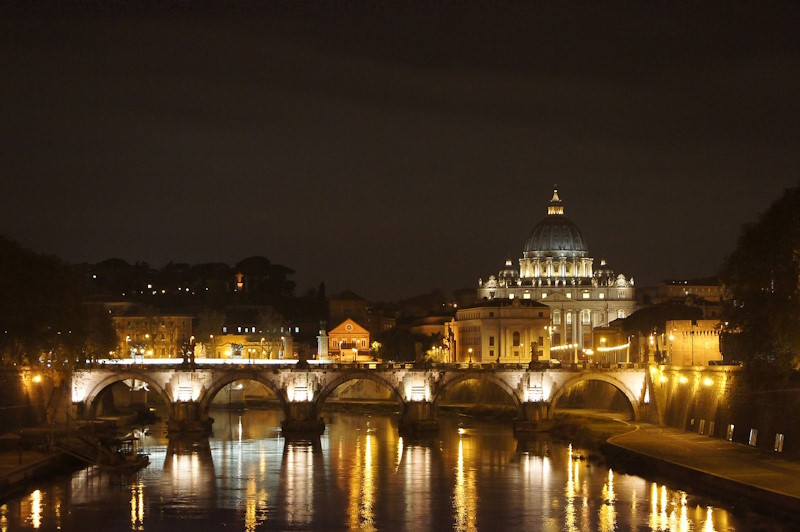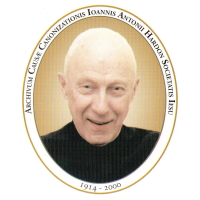,by Fr. John A. Hardon, S.J.
Until recent years, we would hardly have written on a subject like “The Roman Primacy and the Spiritual Life.” But much has happened to call for some inquiry into the relationship between faith in the papal primacy and growth in the spiritual life. We now know, more clearly than ever before, that not only progress in the spiritual life depends on people’s faith in the supreme authority of the Bishop of Rome…the very survival of Christian spirituality is at stake.
There are several reasons for this cause-and-effect relationship between papal authority and the pursuit of holiness.
Since the early days of the Church, religious communities of men and women have dedicated themselves to the practice of more than ordinary virtue. Their members bind themselves under vow to practice what we now call the evangelical counsels, notably consecrated chastity in the sacrifice of marriage, poverty in the dispossession of material goods, and obedience in submission, under rule, to the authority of appointed or elected superiors.
But these initiatives of Christian perfection, as we now call them, have to be approved by ecclesiastical authority, which ultimately means the Holy See under the Bishop of Rome. The great founders of these institutes, like Saints Pachomius and Augustine, Benedict and Bernard, Francis, Dominic, and Ignatius; Saints Angela and Teresa of Avila, Elizabeth Seton and Mother Cabrini—have in turn inspired millions of persons, living in the world, to imitate their charisms in every walk of life. The very terms Benedictine, or Franciscan or Teresian spirituality, have meaning only because those who were inspired by the masters of the spiritual life had papal authority to confirm the validity of what they were doing. Remove the papacy, and you dissolve the value of Franciscan or Dominican or Ignatian spirituality.
By now there are thousands of men, women, and even children whom the Church has raised to the honors of the altar. Most of them had never founded a religious institute. Some of them left little or nothing in writing. Yet they have been declared saints by the Catholic Church on two counts: that they are certainly in heavenly glory, and that their lives are to be imitated by the faithful as exemplars of sanctity.
What Assurance Do We Have?
But what assurance do we have that the persons who are honored by the Church as saints are really imitable as patterns of holiness? In the final analysis, it is the authority of the Bishop of Rome. In the first two thousand years of the Church’s history, even in the early centuries, the veneration of certain persons for their reputed sanctity had to be finally, at least implicitly, approved by the Vicar of Christ.
Apart from the writings of canonized saints, whole libraries have been written by Catholic authors dealing with every facet of Christian perfection. The accumulated value of this writing is in thousands of books, some of which have become standards of spiritual literature for the whole world. Here again, the Church’s authority, finally vested in the pope, has had to sift and screen this ocean of spiritual literature. And the screening is constantly going on. By now, a Catholic can well know what spiritual writers are faithful to the Church’s Magisterium, and which ones —and to what extent—are not.
Magisterium and Spiritual Life
For almost two millennia, this same Magisterium, under the papacy, has been issuing documentation on every aspect of the spiritual life. The popes themselves have published a treasury of spiritual wisdom to instruct the faithful on the meaning of holiness, on the means of attaining sanctity, and on the measures to be taken to follow in the footsteps of Jesus Christ.
For the first time in conciliar history, the Second Vatican Council has issued whole documents on the principles and directives for bishops, priests, religious, and the laity—on the pursuit of sanctity. All of this detailed documentation had to be—as it was— formally approved by the successor of Peter, the Bishop of Rome.
The Abundance of Grace
A closing observation: as St. Paul tells us, where sin abounds, there grace is even more abundant. The modern world abounds in sin—like the legalized murder of millions of unborn children every year. Faith tells us that grace is correspondingly, and more than ever, bountiful. Our age needs nothing more than saints, to be the channels of grace in a world that is intoxicated with itself. But to ensure the guidance of the Holy Spirit in leading souls to sanctity, we need and—indispensably—the guidance of the papal primacy.
There is more implied in this statement than meets the eye. We commonly, and correctly, associate the papal primacy with the exercise of authority in governing the Church. The question is what is the most important exercise of authority in the Catholic Church? It is nothing less than to ensure that the Church founded by Christ is truly holy. But sanctity is no mere speculative judgment. Nor is it simply a declaration by someone in authority that a person has truly practiced holiness and therefore deserves to be not only called but literally considered a saint.
Without a Church that can infallibly declare that a person had lived a truly saintly life, there is nothing which the Church could teach without danger of error. Everything depends on whether the Catholic Church not only can, but actually has produced saints.
The single most important truth that the Catholic must know without the risk of error is that this Church produces saints. Everything else in Catholic teaching depends on this assurance. That is why the Church founded by Christ can, and does, infallibly teach that to live up to her norms of holiness produces real saints.
Father Hardon is the Executive Editor of The Catholic Faith magazine.
Copyright © 1999 Inter Mirifica


